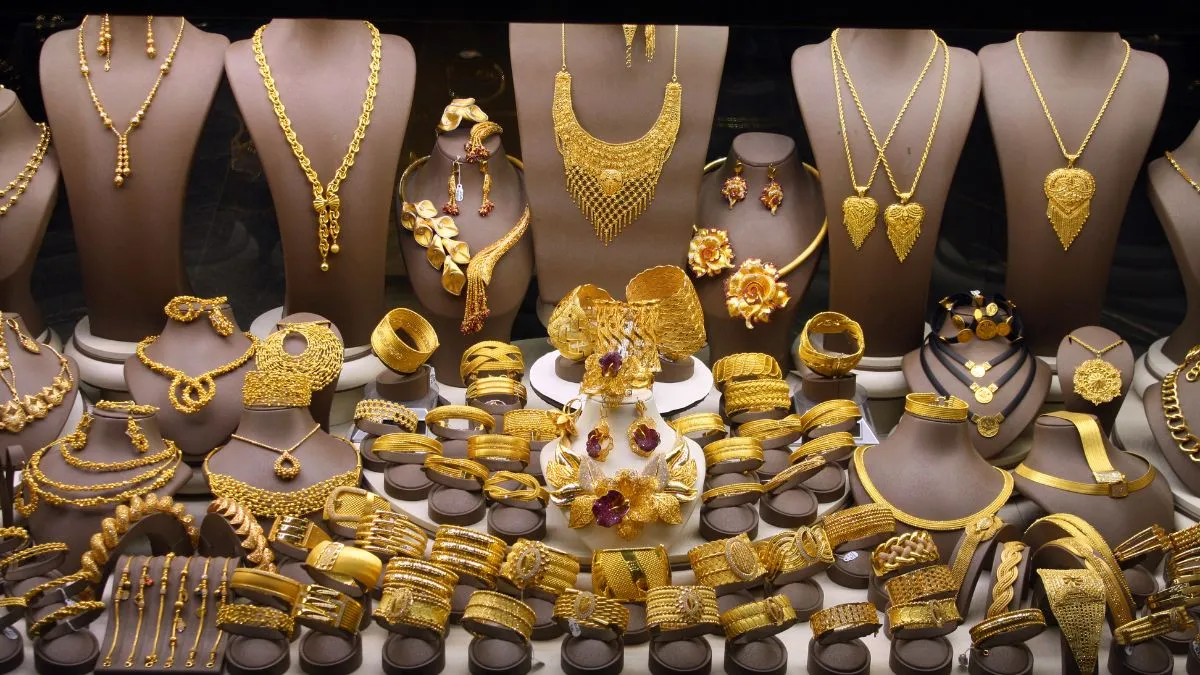- By Chetna Shree
- Wed, 15 Oct 2025 08:29 PM (IST)
- Source:JND
Gold Rate: With Dhanteras around the corner, falling on October 18th this year, gold buying traditions are evolving. While 22 and 24-carat gold remain a popular choice, 9-carat gold is emerging as buyers’ favourite due to affordability and durability.
Earlier in July 2025, the central government officially approved the hallmarking of 9-carat gold jewellery, putting it on par with 24K, 23K, 22K, 20K, 18K, and 14K gold jewellery in terms of recognition. However, questions remain about whether 9-carat gold is a good investment or primarily suited for jewellery use. Let’s know what experts say!
What Is 9 Carat Gold?
In July 2025, the central government approved hallmarking for 9-carat gold jewellery, placing it alongside 24K, 23K, 22K, 20K, 18K, and 14K gold. 9-carat gold contains 37.5 per cent pure gold, with the rest made of alloys like copper, silver, and zinc, the Economic Times reported.
9-carat gold is both stronger and affordable than higher-carat options. Experts say this makes the 9-carat gold an attractive option for buyers seeking durability and budget-friendly alternatives to traditional 22K or 24K gold.
ALSO READ: Gold Rate Today: Yellow Metal Continues Upward Trend, Surging Prices Across All Purities
Is 9-Carat Gold A Better Investment Option? Experts Weigh In
A lower gold percentage doesn’t necessarily mean lower quality. Vijay Kuppa, CEO of InCred Money, says, “If you’re looking for durable, affordable fashion jewellery for everyday wear, 9K or 14K is practical because the added alloys make it much stronger.”
“But if your goal is wealth preservation or investment, always choose the highest purity you can, which is typically 22K for jewellery or 24K for coins, bars, or digital gold,” Vijay added.
“9K gold (37.5% purity) is not suitable for investment in India. It is inexpensive and durable, but it has too low a gold content to have much intrinsic value,” Prithviraj Kothari, Managing Director at RiddiSiddhi Bullions Ltd., President of India Bullion and Jewellers Association Ltd, said.
“22K (91.6% purity) and 18K (75%) gold are better options for jewellery and investment since more of their resale value is linked to gold prices in the market, while 14K and 9K are mainly for fashion jewellery,” he added.
“Jewellery made from 18K or 9K is a personal asset, not an investment. Once you factor in making charges, GST, and purity loss, it’s all about aesthetics. Only 22K and 24K gold fit the definition of a true investment,” Trivesh D, COO, Tradejini said.
Why People Are Buying 9-Carat Gold Jewellery?
- Experts note that the younger generation and urban consumers are increasingly choosing 9K and 14K gold, not as pure investments but as affordable luxury jewellery for everyday wear.
- They are choosing an affordable gold option to gain exposure to the gold asset class.
- Aksha Kamboj, Vice President, India Bullion & Jewellers Association (IBJA) and Executive Chairperson, Aspect Global Ventures, says, “With 24K prices at steep levels, the lower karat allows for a lighter ticket entry, and so many buyers are willing to compromise and take on a lower karat of either 14K or even 9K gold to keep an exposure to the gold asset class.”
Will Hallmarking Boost Acceptance of 9K Gold Among Budget Investors?
According to experts, hallmarking of 9K and 14K gold will boost trust among budget-conscious buyers. “The Indian Bureau of Standards (BIS) has approved the hallmarking of 9K gold as of now, so there is some guarantee of the purity that is on the label, and therefore consumers will trust even lower purity gold,” Aksha added.

